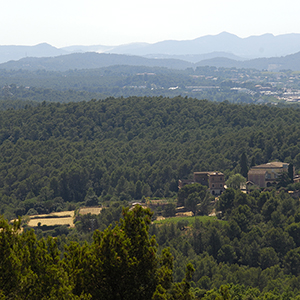Stone shacks, drystone walls, water tunnels and fountains are unobtrusive constructions that are part of the history and tradition of the chain of mountains since time immemorial. The characteristics common to all of them are their simplicity and their ingenuity. The shacks were important edifices closely linked to agriculture in the mountains until the mid-20th century. The changes to people’s customs and habits and the later gradual move away from unirrigated crops resulted in these shacks falling into a poor state of repair, so much so that in many cases they disappeared completely or are in a state of ruin. Even so, a hundred or so have survived, some more recognisable than others, and are concentrated above all on the Llobregat side.
These constructions are traditional agricultural heritage that needs to be preserved and improved. To this end, in recent years the park has been making considerable effort to catalogue and discover more about all those still standing. In addition, three of these remarkable edifices have been restored thanks to a partnership accord with Sant Feliu Town Council. The Collserola Volunteers have participated actively in some of these tasks.
For more information about these iconic features of our landscape, we recommend that you visit the Wikipedra portal (wikipedra.catpaisatge.net), which set up the Landscape Observatory of Catalonia in 2011. On this portal, you will be able to enter, view and consult information about drystone constructions in Catalonia.



